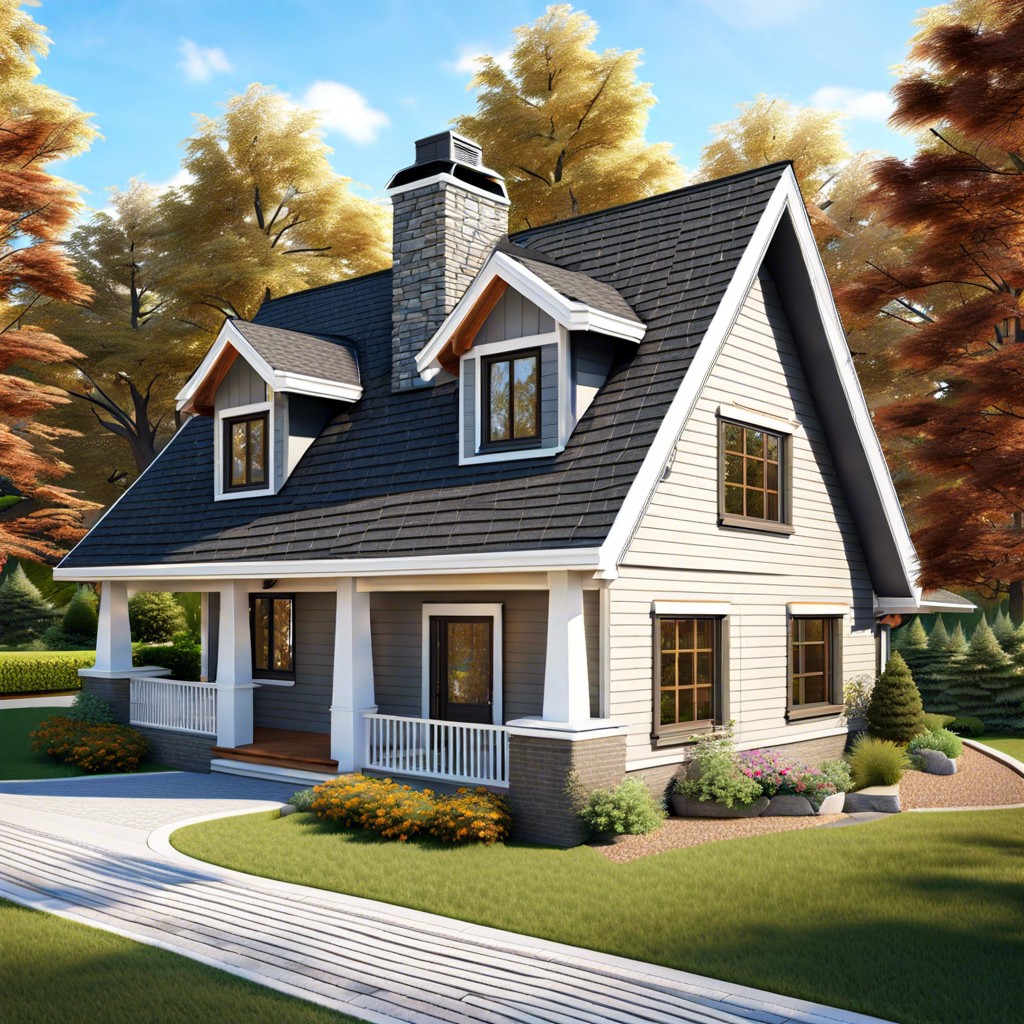Last updated on
This article explains the correct plural form of the word “roof.
Key takeaways:
- The plural of “roof” is “roofs.”
- “Rooves” is a less common traditional form of the plural.
- It is best to use “roofs” for clarity and modern correctness.
- “Roofs” is used in both British and American English.
- “Rooves” is still sometimes used in British, Australian, and New Zealand English.
Definition of “roof”

A roof is the top covering of a building, essential for protecting it from the elements. It serves several purposes beyond just shielding occupants from rain or snow; it also provides insulation, adding to the building’s energy efficiency, and contributes to the overall aesthetic appeal and structural integrity. Available in various shapes, sizes, and materials, roofs cater to diverse climatic conditions and architectural styles. From flat roofs that are common in arid environments to sloped ones that help shed snow and rain more effectively in wetter regions, each design addresses specific environmental demands and personal preferences.
Plural Forms of “roof”
The word “roof” adheres to standard English rules for forming plurals. Typically, you simply add an ‘s’ to the end of the word to denote more than one. Thus, the plural of “roof” is “roofs.” This form is widely accepted and used in both spoken and written English.
However, the variant “rooves” also exists, primarily as a less common traditional form. Historically, “rooves” was the standard plural, particularly in British English, due to an Old English pattern that affected certain nouns. Over time, “rooves” has become largely obsolete, but it can still be encountered occasionally in literary or historical texts.
In contemporary usage, when referring to multiple structures covering buildings, it’s best practice to use “roofs.” This not only aligns with modern conventions but also mitigates confusion, ensuring clarity in communication.
Correct Usage of “roofs” and “rooves”
Most commonly, “roofs” is the accepted plural form of “roof” in both British and American English. It follows the regular pattern of noun pluralization where an “s” is simply added to the end of the word. For instance, you’d say, “All the houses in that neighborhood have green roofs.”
Historically, “rooves” was also used as the plural form of “roof”. This variant is now considered archaic and is rarely used in contemporary English. However, you might still encounter “rooves” in literary texts or from older speakers in some regions.
When writing or speaking, it’s safest to stick with “roofs” to maintain modern correctness and clarity. This will help your audience understand and ensure your English is up to date.
Examples in Sentences
In practical terms, using “roofs” and “rooves” correctly can be demonstrated through simple examples.
- After the storm, the village repaired several damaged roofs.
- The old cottages with their quaint thatched rooves are a tourist attraction.
These sentences show “roofs” functioning as the preferred modern spelling in a general context, while “rooves” appears in a more nostalgic or historical setting, which may be more common in British English but is largely considered archaic.
Regional Variations in the Usage of “roofs” Vs. “rooves”
In different regions, you’ll hear “roofs” and “rooves” being tossed around. “Roofs” is the standard plural form used primarily in American and Canadian English. It follows the regular pattern of adding an -s to make a noun plural.
On the other hand, “rooves” is an older form that still pops up in British, Australian, and New Zealand English, although it’s becoming less common. It’s a curiosity and a remnant of Middle English, where plurals were often formed differently.
So, if you’re scribbling a note to a friend in London or crafting an email for colleagues in Toronto, knowing these regional preferences can add a dash of local flavor to your writing.
Related
- How to Frame a Roof: Step-by-Step Instructions for Beginners
- Red Roof Plus West Palm Beach: Comprehensive Hotel Review and Information Guide
- Eaves of a House: Understanding Their Purpose and Importance
- Red Roof Inn Princeton – Ewing: Unbiased Hotel Review & Essential Guide
- Hail Damage Roof: Identifying and Managing Your Home’s Vulnerability
